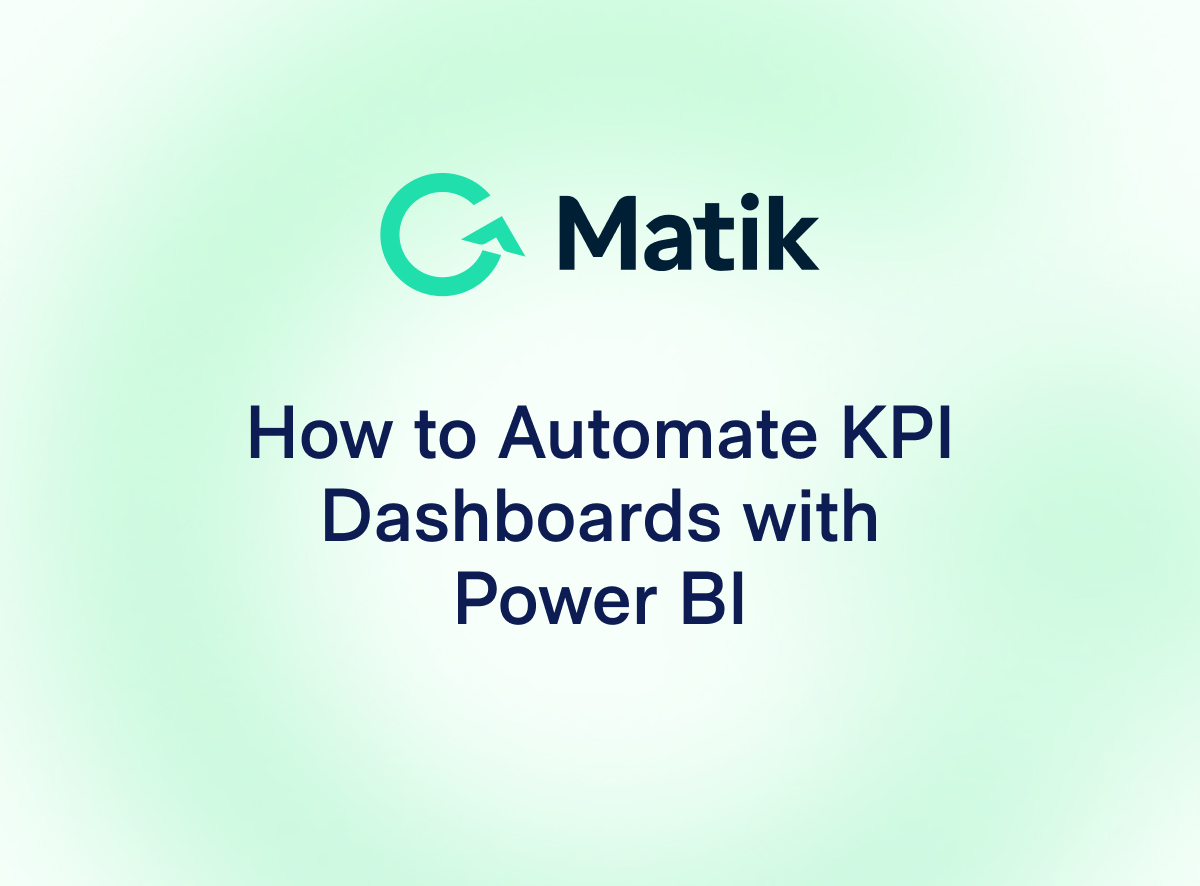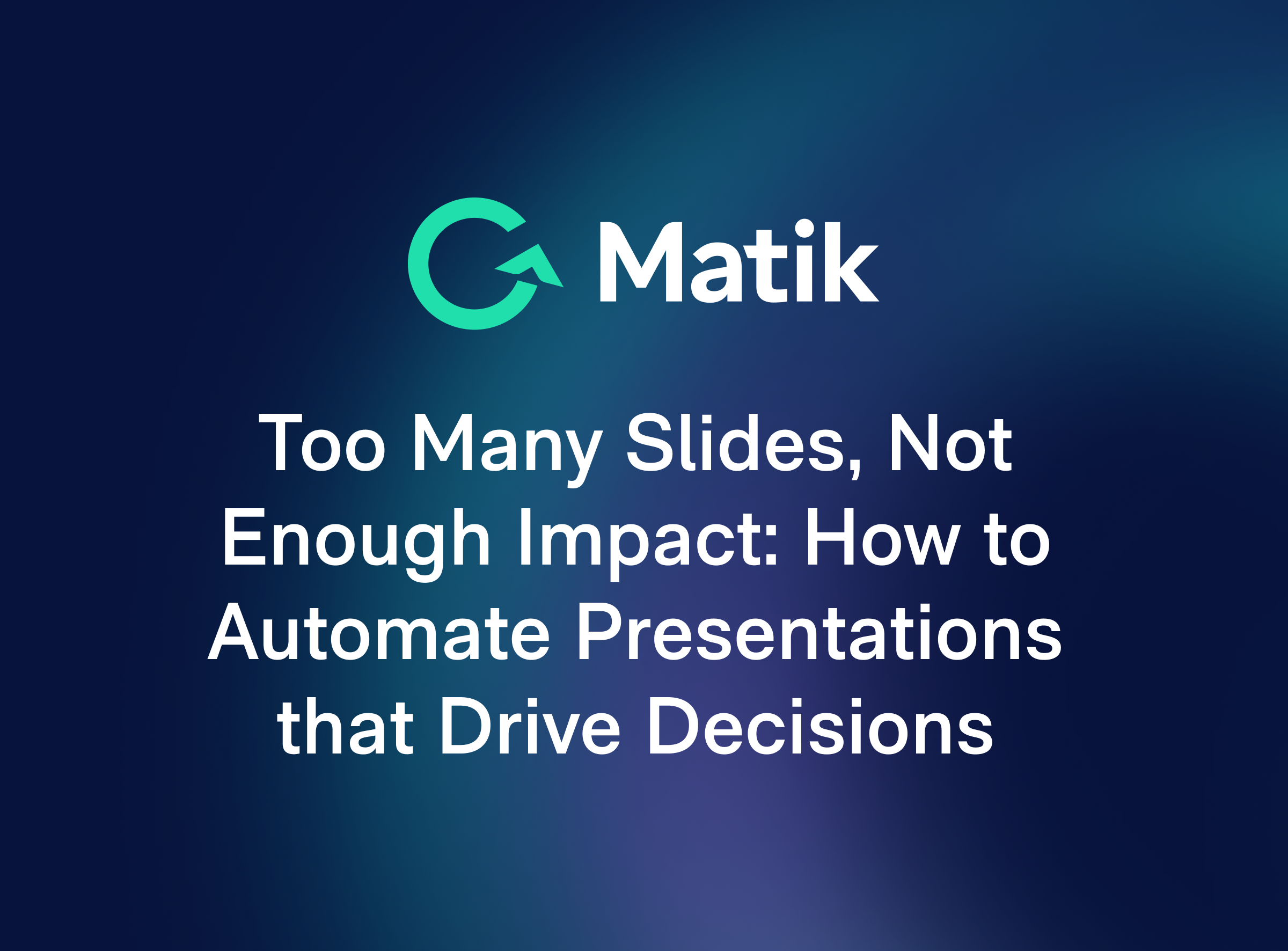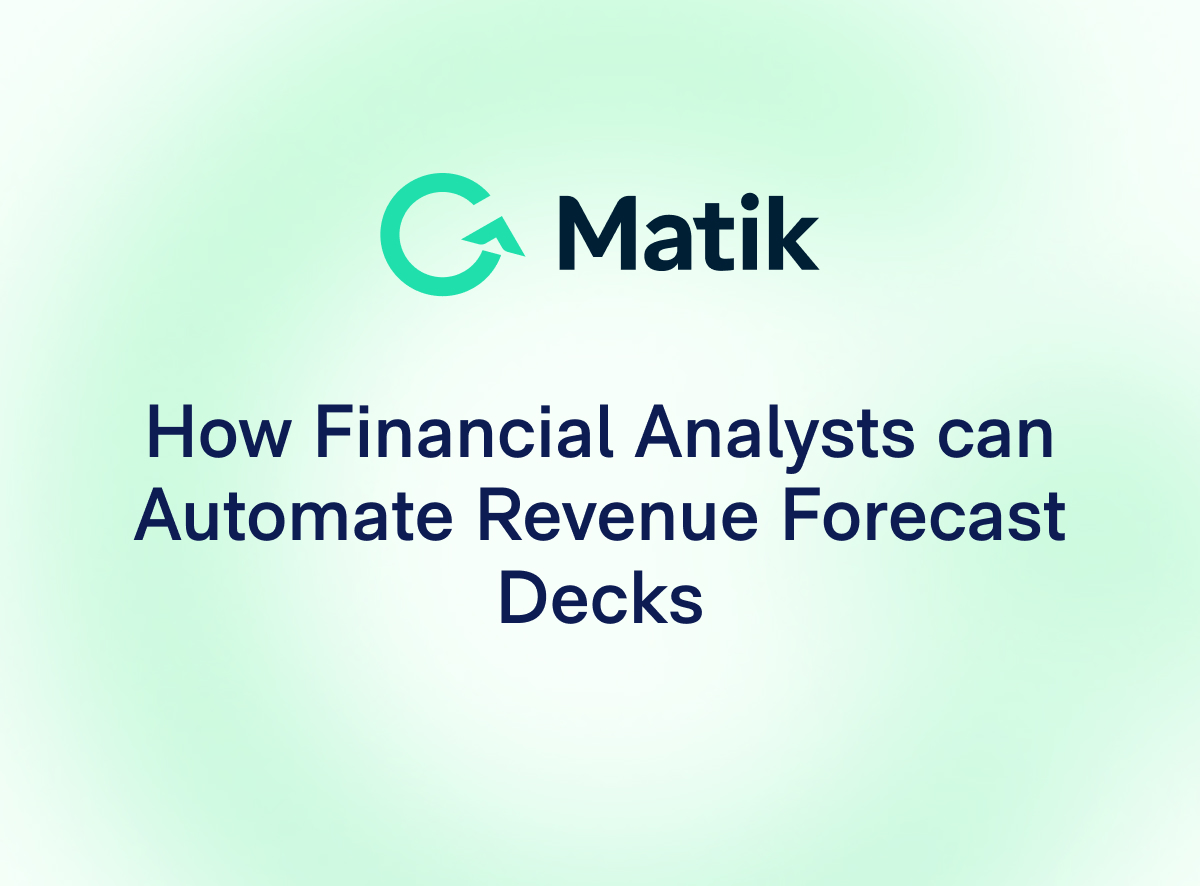Join Our Newsletter
Imagine this: you open Matik, you connect it to your Power BI data, you hit generate, and in minutes, you have a fully built KPI dashboard that looks polished, tells a clear story, and feels like it was made for your stakeholders. All without wrestling with slides or spreadsheets.
That is what you get when you automate the creation of KPI dashboards with Matik.
What Is a KPI Dashboard?
A KPI dashboard is a report you share with your team. It might be a slide deck, a spreadsheet, or a simple document. Its job is to show how teams, projects, accounts, or even products are performing, highlighting the most important numbers, and making it easy for people to understand what is happening. It is meant for quick clarity, not interactive exploration, and is often used by executives, operations teams, sales, marketing, and customer success.
Why You Should Automate KPI Dashboards Using Matik
When you let Matik build your KPI dashboard, you stop doing repetitive, manual work. You move from copying and pasting data to sharing insights and shaping strategy.
Here is why automation delivers more impact than just speed:
1. Strategic capacity unlocked
Yes, automation frees up your time, but additional value comes from when you spend that time on higher-impact work. With Matik handling automated content creation, you can coach reps, dig into root-cause analysis, talk with customers, run experiments, and focus on strategic priorities.
2. Deeper storytelling
Matik’s AI can write summaries, generate key insights, and suggest relevant next steps. Your dashboards do more than show data. With Matik, your KPI dashboards help answer what changed, why it matters, and what you might do next.
3. Better content, every time
Because Matik pulls directly from Power BI, your charts and numbers always reflect the most up-to-date information. You don’t have to worry about copying wrong values or missing a metric. Your dashboard looks clean, consistent, and professional.
4. Personalization that lands
You can use variables to tailor dashboards for different audiences, by department, quarter, or team. That means each stakeholder gets a version that speaks to them. When people receive information that’s tailored, it helps drive action.
5. Scalability with quality
As your team grows or you take on more accounts, you can scale dashboard production without sacrificing consistency, clarity, or personalization. Automation lets you generate more while maintaining the same high standard of storytelling.
Real Impact from Real Customers
Here is a concrete example from Matik’s own customers. Salesloft used Matik to automate their Quarterly Business Review (QBR) decks. As a result, over 700 accounts received data-driven presentations, and Matik influenced $60 million in ARR.
Even more, Salesloft customers who received automated QBRs generated by Matik renewed at a rate of 98 percent, and 86 percent of them upgraded.
By leveraging Matik, Salesloft was able to drive business growth and build real value through consistent, high-quality communication, not only just make deck creation faster.
Another example: Indio used Matik to automate their health-check one-pagers. Their customer success managers saved 2,700 hours in a year, and Matik generated more than 138,000 data insights.
How to Automate KPI Dashboards by Pulling From Power BI and Using Matik
Here is how you could set up Matik to generate your KPI dashboards from Power BI data:
1. Build or choose a dashboard template you already use whether that is a deck, a sheet, or a document. Make sure the style, branding, and layout are clean and ready for insight.
2. Upload your template in Matik
3. Connect Matik to your Power BI instance. Give it access to the data sets, reports, or queries that house your key metrics.
4. In Matik, map out which data to pull in: your KPIs, charts, tables, trend lines. Place them in the correct spots in your template.
5. Define variables for personalization. For example: department, quarter, or team. These will let you produce versions tailored to each stakeholder.
6. Tell Matik when to generate a new dashboard. When you run it, Matik will query your Power BI data, fill in the visuals, generate insight text, and produce a ready-to-share file.
7. Choose how to deliver the dashboard. You can generate a brand-new file each time, or instruct Matik to refresh an existing file with updated data.
8. Automate delivery if you like. You could bulk generate dashboards, schedule them, or trigger them via a system like Salesforce. Use Matik’s template library and custom save paths to keep everything organized.
Why Automating Really Changes How Your Team Works
When your KPI dashboards are automated and insight-rich, people trust them more. Stakeholders do not question whether the numbers are right. Instead they focus on strategizing the next step.
And because you are no longer building KPI dashboards manually, you can redirect your energy toward the work that actually moves the needle. You spend more time coaching, analyzing, planning, and connecting with customers. You stop being stuck in sprint cycles of reports and start leading conversations that matter.
In short, automation via Matik helps you deliver high impact content at scale and lets you spend your time on the most important priorities.
---
Interested in Matik? Request a demo here













